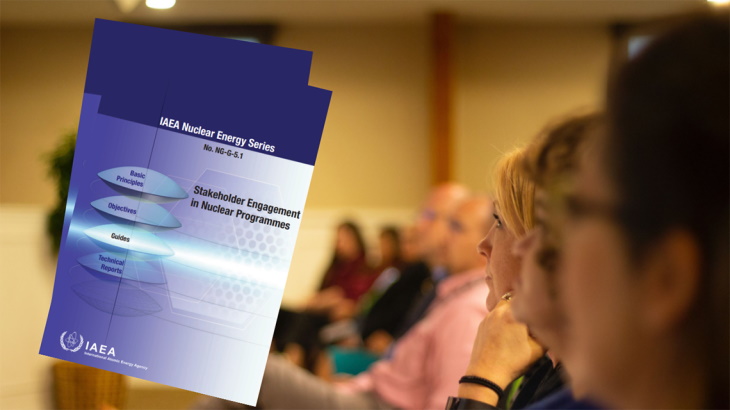IAEA releases guide to stakeholder engagement
The International Atomic Energy Agency (IAEA) has published its first "guide level" publication to support national efforts to engage with stakeholders throughout the life cycle of all nuclear facilities. To succeed, nuclear projects need to engage with all relevant stakeholders, including the public, and explaining nuclear energy, strengthening relationships and building trust with stakeholders is key to this, the Agency said.

(Image: IAEA)
Stakeholder Engagement in Nuclear Programmes provides theoretical and practical guidance on developing and implementing stakeholder engagement programmes and activities, and is part of a series of IAEA initiatives to support countries in this area. The guide aims to help communication experts, senior managers and other experts to establish and maintain a long-term stakeholder engagement strategy and activities covering the entire life cycle of nuclear facilities from uranium mining and new and operating reactors to non-electric applications, radioactive waste management and decommissioning.
"Stakeholders come in a variety of shapes and sizes," the IAEA said. "Some, such as regulators, are required by law to be involved in projects. Others include any individuals or groups who feel affected by an activity." Stakeholder engagement programmes can enable those individuals and groups to be involved and understand the basis for decisions, enhancing confidence and building trust in a project.
The publication builds on years of experience from working with governments and organisations, identifying good practices and crafting methodologies and approaches for effective stakeholder engagement, said IAEA Technical Officer Lisa Berthelot. "There is no engagement recipe, in the end, because each context is different, but this guide lays out the foundations for what is a crucial element in any nuclear programme," she added.
The new guide identifies five key principles for effective engagement: building trust, demonstrating accountability, exhibiting openness and transparency, practising early and frequent consultation; and communicating the benefits and risks of the nuclear technology. It covers the development of stakeholder engagement strategies and plans, including practical information such as stakeholder mapping; the roles and responsibilities of key nuclear organisations; and the engagement approaches for the different life cycle stages, each of which requires its own strategic approach.
Stakeholder engagement is of particular interest to newcomer countries seeking to introduce a new nuclear power programme and is one of the 19 nuclear infrastructure issues that make up the IAEA’s Milestones Approach, together with others such as nuclear safety and security, funding and financing and radioactive waste management. There are currently around 30 such newcomers, with Bangladesh and Turkey already constructing their first nuclear power plants, the Agency said.
The IAEA has provided newcomer countries with insightful capacity building support in stakeholder engagement for years," said Arda D Duran of the Turkish Ministry of Energy and Natural Resources. "With this publication, the IAEA will keep helping newcomer countries to improve our understanding and ability to effectively engage with stakeholders."
Researched and written by World Nuclear News
- China Institute of Atomic Energy
- Nuclear Power Institute of China
- Southwestern Institute of Physics
- China Nuclear Power Operation Technology Corporation, Ltd.
- China Nuclear Power Engineering Co., Ltd.
- China Institute for Radiation Protection
- Beijing Research Institute of Uranium Geology (BRIUG)
- China Institute of Nuclear Industry Strategy (CINIS)
- China Nuclear Mining Science and Technology Corporation


